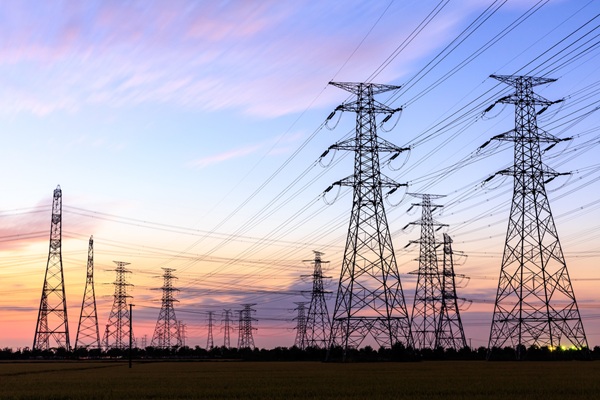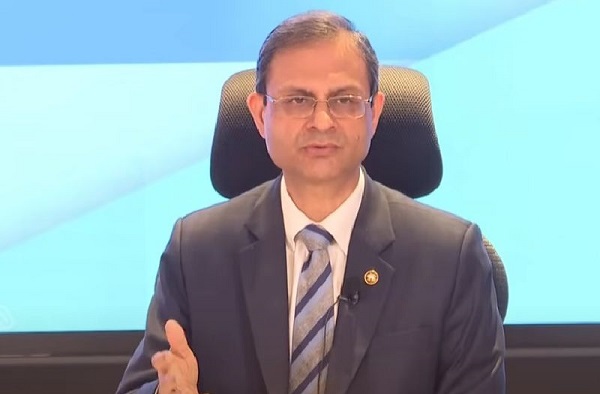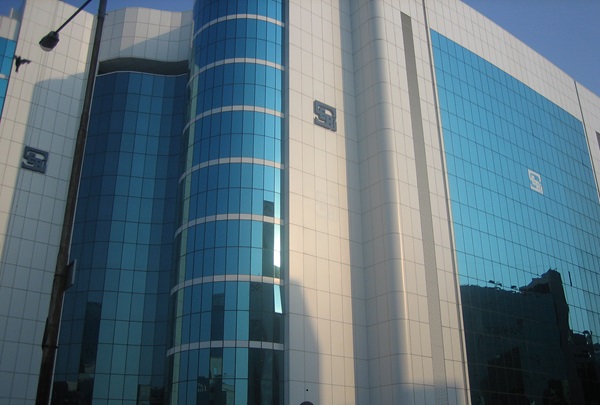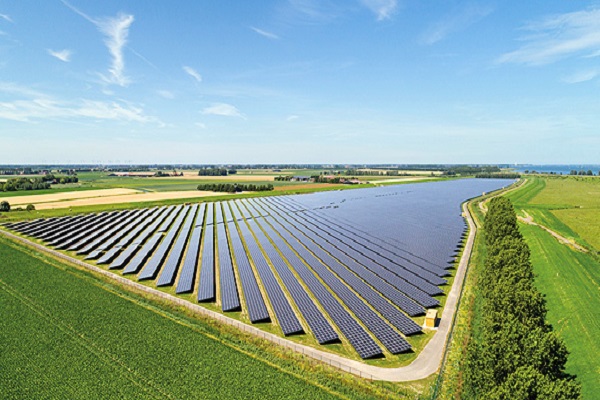.png)
The End of the Centralised Grid, the Dawn of a New Power Order
The Diagnosis: A one-way grid built for the industrial age can no longer power the digital one. The shift to a decentralised, adaptive network is already underway.


Sharmila Chavaly, ex-senior civil servant, specialises in infra, project finance, and PPPs. She held key roles in railways and finance ministries.
October 24, 2025 at 5:44 AM IST
The electrical grid, once a cornerstone of modern development, is quietly collapsing under its own weight. A system built to carry power in one direction, from a handful of plants to millions of passive consumers, is now straining against the realities of the twenty-first century in which artificial intelligence, data centres, electric vehicles, rooftop solar, each demands more from an architecture designed for much less.
What we are witnessing isn’t a temporary overload but a structural breakdown. The twentieth-century grid is losing both purpose and coherence. Governments, already stretched thin and facing vast infrastructure deficits, are left with an unenviable choice: keep pouring public money into a model that’s failing, or use what’s left of their fiscal room to build something new, which is a grid that’s decentralised, dynamic, and fit for the age of electrification.
This three-part series diagnoses the structural crisis and proposes a comprehensive policy blueprint for its redesign.
This, the first part, deals with the diagnosis — the structural failure of the centralised grid and the tipping point that has pushed it from gridlock to breakdown.
DNV’s Energy Transition Outlook 2025 report offers a quiet but startling forecast: distributed solar generation will begin outpacing utility-scale installations in some parts of the world by 2060, with close to half of all global solar capacity co-located with storage. Reading this as a simple market trend would be to miss its profound implications, because it statistically confirms a terminal diagnosis for the twentieth-century electrical grid. This is not a distant future scenario, but the logical endpoint of a structural crisis already corroding power systems from within. From the server farms of Virginia to households in Lahore, the centralised, top-down grid model can no longer cope with the demands placed upon it.
The crisis manifests differently across economies, but the root cause is identical: an architectural and economic model fundamentally incompatible with a future of distributed, variable, and consumer-driven power.
The first syndrome is financial, a death spiral.
The conventional utility business model depends on ever-growing consumption, tying revenue and profitability to the number of kilowatt-hours sold. This model is now being dismantled by its own success.
Rooftop solar, battery storage, and energy efficiency — the very technologies meant to decarbonise the system — now erode the utility’s customer base and revenue stream.
As affluent customers invest in solar panels and batteries, reducing their grid dependence, the immense fixed costs of maintaining the transmission and distribution network, including the poles, the wires, and substations, must be spread across a smaller, often lower-income customer base. This forces utilities to raise tariffs, making the economics of defection even more attractive for the next tier of customers and accelerating the flight from the grid. The utility enters a financial feedback loop that it cannot escape, and progress in clean energy technology directly triggers financial insolvency.
This dynamic cripples efforts to expand grid infrastructure in regions that need it most, whether in vast swathes of the world still without access to electricity or in networks isolated by design or geography.
The second syndrome is technical rigidity.
The physics and engineering of the conventional grid were designed for predictability and control, with electricity flowing in one direction: from a few dozen large, dispatchable power plants (coal, gas, nuclear, hydro) outward to millions of passive consumers. This system is inherently incapable of efficiently managing the chaotic, bidirectional, and variable flow of electrons from millions of decentralised sources.
This rigidity creates a perverse and costly paradox. In sun-drenched California or windy Texas in the US, grid operators are being increasingly forced to curtail renewable generation or to pay producers to switch off because the grid cannot absorb that power without causing instability. Simultaneously, to maintain reliability during peak hours, these same operators must fire up ageing, inefficient, and highly polluting natural gas “peaker” plants.
The result is a worst-of-both-worlds outcome: we waste the cheapest, cleanest electrons ever produced while remaining dependent on the most expensive and polluting ones, as the grid’s design actively fights the energy transition it is supposed to enable.
The third, equally crippling, syndrome is the paralysis of pace.
The planning, approval (“permitting”), and construction of large-scale centralised infrastructure — a new nuclear plant, a major hydroelectric dam, or a thousand-kilometre transmission corridor — is a process measured in decades. But the world’s energy transition and digital revolution are advancing in years, not decades.
This mismatch creates a permanent state of crisis management. Grid operators are left trying to fit square, gigawatt-scale pegs into the round, dynamic holes of a modern energy system. The “connection queue” for new generation projects in the US and Europe, often stretching to thousands of projects and years of delays, is the most visible symptom of this paralysis. The system is just not designed for agility.
The crisis is not theoretical. Around the world, examples of grid failure reveal what happens when old systems meet new realities.
Pakistan offers a stark tableau of the death spiral in action. Years of losses, theft, and unreliable supply have turned state-owned distribution companies into agents of decline. For industries, hospitals, and middle-class households, grid power is not a service but a liability. The rational response has been a mass defection to partial- or off-grid solutions, primarily rooftop solar.
As these high-value customers, the ones who subsidise the system, disconnect, the financial burden of the national network collapses onto a shrinking base of lower-income, rural, or politically shielded customers. The DISCOMs, starved of revenue, cannot maintain the existing grid, let alone invest in its modernisation. Tariffs are raised by the government to plug the gap, driving yet more consumers to leave. What remains is a system hollowed out from within, a public asset on the verge of becoming a poor man’s service, starved of both capital and trust.
China demonstrates the danger of half-measures.
The country executed the world’s most ambitious build-out of renewable energy, installing colossal solar and wind farms in its western provinces at a pace that dwarfed all other nations. However, the state maintained rigid control over end-user electricity prices.
When a severe drought crippled its massive hydropower capacity, wholesale electricity prices on China’s spot markets spiked. But grid companies and utilities, legally unable to pass these costs to consumers, were instantly pushed into financial distress, forced to buy high and sell low. This crisis proves a critical lesson: you cannot solve a twenty-first-century energy crisis with a Soviet-era pricing model. Deploying green assets is not enough; the underlying economic and architectural platform must be modernised in tandem.
In the United States, the cost of congestion tells its own story.
Theoretical risks are now manifesting as tangible costs. A recent analysis by Heatmap of the PJM Interconnection, the grid operator for 13 Mid-Atlantic and Midwestern states, reveals a chilling reality. In New Jersey, a state aggressively pursuing clean energy, electricity prices have skyrocketed not because generation is expensive, but because the grid is paralysed.
The problem is congestion. Existing transmission lines are too clogged to bring cheap, renewable power from where it’s generated to the population centres that need it. The result? Grid operators are forced to dispatch expensive power, often from fossil-fuelled local plants, while cheaper, cleaner power is left stranded.
The cost of this failure is not abstract. In 2023 alone, congestion costs in PJM ballooned to over $2 billion, more than double the previous year, a bill footed directly by consumers. This is a direct wealth transfer from families and businesses to the owners of legacy power plants, all to prop up a grid that cannot perform its most basic function.
Across continents, evidence is converging that the centralised grid model is in structural decline. Efforts limited to financial bailouts, debt restructuring, and piecemeal technological upgrades, which most governments are offering, are merely palliative care for a deeper systemic disease, a system that needs redesign, not resuscitation.
A twenty-first-century grid has to be decentralised, dynamic, and intelligent — a platform that integrates millions of small producers and consumers rather than one that resists them.
The question is no longer if the old grid will be replaced, but what will take its place — and whether governments will seize the chance to make that shift before the fiscal window closes.
“The Diagnosis” is Part 1 of a three-part series. In Part 2, “The Prescription” will set out a vision for a new “Arterial Grid,” and in Part 3, “The Implementation” will show how to finance it; faster, cheaper, and more equitably than propping up the failing status quo.



